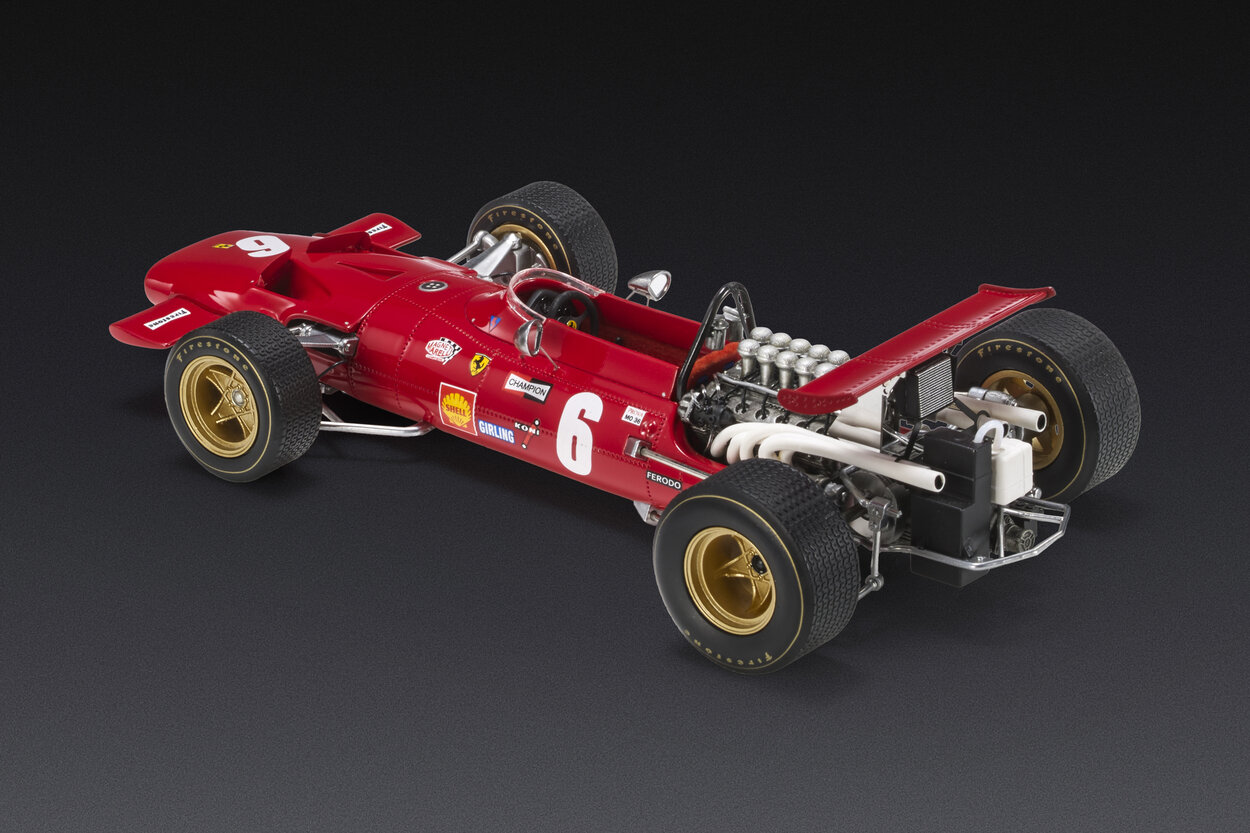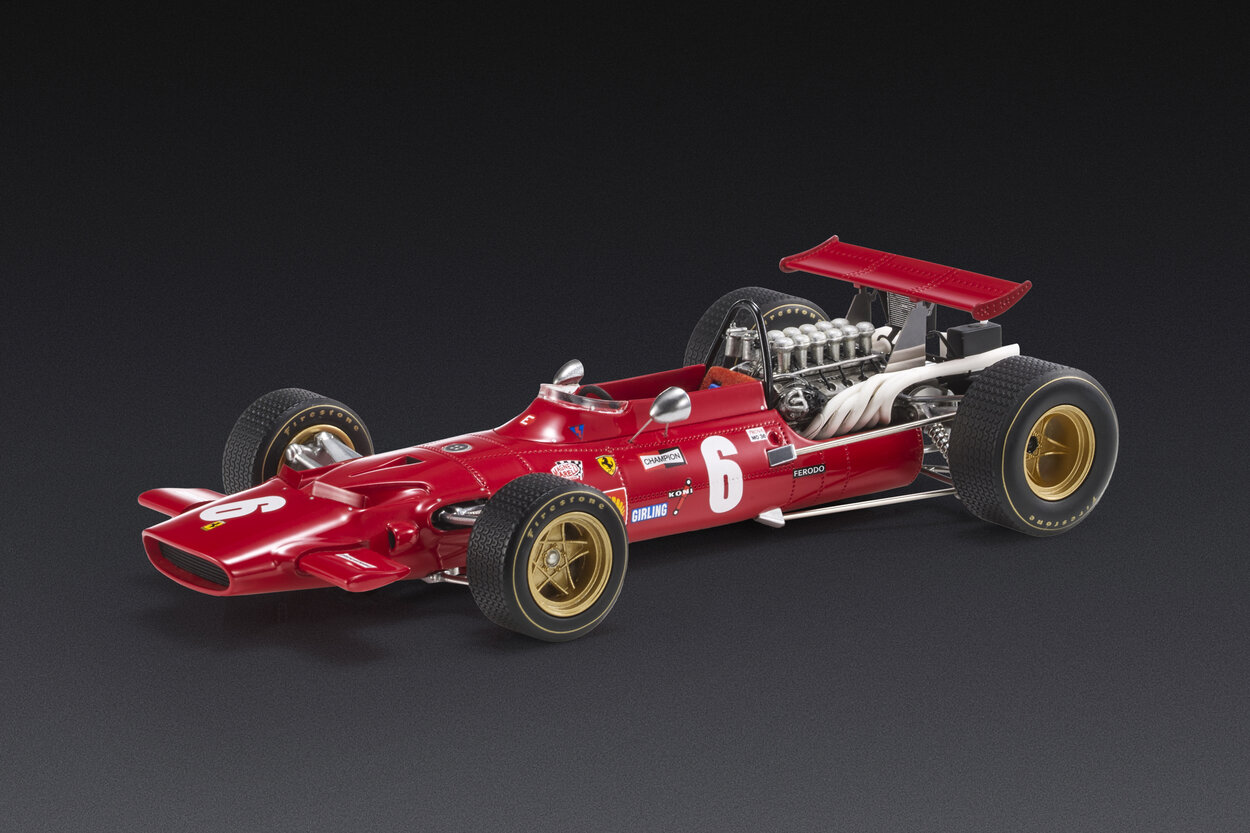Ferrari 312 (1969)
In the last season in which the 312 F1 is used, the power of the 12-cylinder engine rises to 436 hp. Another significant innovation concerns the rear wing introduced the previous year, which now, after various experiments, but above all after the near tragedies in the Spanish Grand Prix involving the two Lotus cars of Graham Hill and Jochen Rindt, is drastically reduced in size and fixed to the car.
But in its fourth season of life, the 312 F1 is now at the limit of its capabilities and will never be truly competitive. The 1969 season is indeed a long ordeal. Of the four races it competes in, it is the one in which the 312 F1 achieves the worst results. Only one podium, seven points in total, no pole positions, no fastest laps during races. Only two chassis were built this year. There were three in 1966, four in 1967, and three in 1968.

Drivers:
Chris Amon: Promoted to the role of lead driver, in 1969 the New Zealand driver is plagued by misfortune and suffers a series of retirements one after another, always due to the fragility of the car he has in his hands. The only positive result of the season is a third-place finish at Zandvoort. Midway through the season, after yet another retirement at Silverstone, he controversially decides not to race with Ferrari anymore, and he leaves the team at the end of the year.
Pedro Rodriguez: The second of the Rodriguez brothers drives the 312 F1 in the latter part of the 1969 season. He is directly fielded by Scuderia Ferrari in the British and Italian Grands Prix, and by Luigi Chinetti’s North American Racing Team in the last three races in Canada, the United States, and Mexico. This is due to budget reasons, which were always present in Ferrari during those years. Despite the significant limitations of the car, Pedro finishes sixth at Monza and fifth at Watkins Glen.
Our model cars:

For budget reasons and in anticipation of the new car that Forghieri is working on for the 1970 season, Enzo Ferrari decides to field only one car in the 1969 World Championship. Given the vehicle’s lack of competitiveness and accepting the limitations of a car that has already been pushed to its limits, at one point during the season in Maranello, it is decided to no longer work on the development of the 312 F1 and to focus exclusively on fine-tuning the car for the following season, the 312 B.

